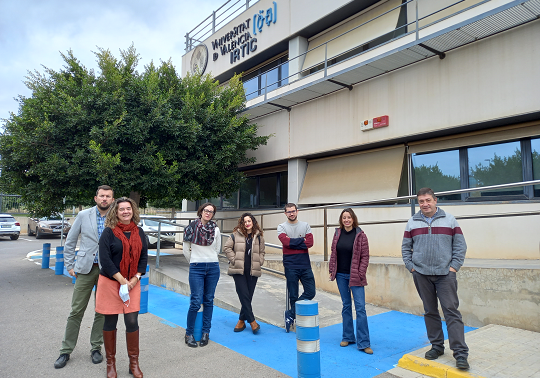
The ARTEC group of the Institute on Robotics and Information and Communication Technologies (IRTIC) and the Department of History of Art of the University of Valencia (UV) have carried out the SeMap project, which consists of the development of an interactive spatiotemporal map that brings together around 300.000 objects from more than 100 Spanish museums associated with the CERES database, the online catalogue that compiles a selection of cultural assets from the collections of the Digital Network of Museum Collections in Spain.
In this way, the tool visually offers the physical location and date of production of the pieces it compiles, with various search filters by category, and establishes semantic links between them. "Thanks to these features," says project director Cristina Portalés, "anyone can intuitively access both the cultural objects and the significant relationships between them and their properties, regardless of the collection they come from.
The map indicates the provenance and the location of the objects, as well as a photo-summary of the piece in question, and provides the spatial distribution of 250.000 results whose location is known, which can be interacted with. It also facilitates word searches and filtering by specific themes.
The working group is building on the experience gained from the SILKNOW initiative, which focused on compiling silk heritage in a digital repository with more than 40.000 objects. It is thus taking a further step in the consolidation of a line of research; in fact, it has already presented the SeMap 2.0 proposal.
In this sense, among the next challenges the team is contemplating is "the visualisation of the museum collection, which sometimes has no dating or whose location is uncertain," Portalés points out. "We would like to look more deeply into how to show this lack of data, or the fact that the general situation of an object is known, such as the country where it is located, but not the specific city. How can this be reported and how should it be represented?”, the researcher explores for the future.
Master students from Art History of the UV are one of the groups that have tested this tool in the stages prior to its completion. Secondary school students in Castellón have also had the opportunity to evaluate SeMap and "their impressions were positive, they were surprised by the number of pieces it contained and to discover their own cultural heritage," says Portalés.
The project is funded through the BBVA Foundation, under the 2019 "Grants for Scientific Research Teams" call, in the "Digital Humanities" discipline. The initiative also has a collaboration agreement with the Collections Area of the Sub-Directorate General of State Museums, which has provided the data of the artistic pieces and participates in the validation of the results.
After its launch in April 2020, the action concludes in the end of January, after 21 months of work. In the future, after completing the modernisation of the CERES database, the sub-directorate intends to integrate SeMap into the platform.
Website: https://www.uv.es/semap/
Also in:


















